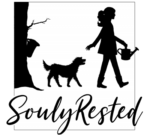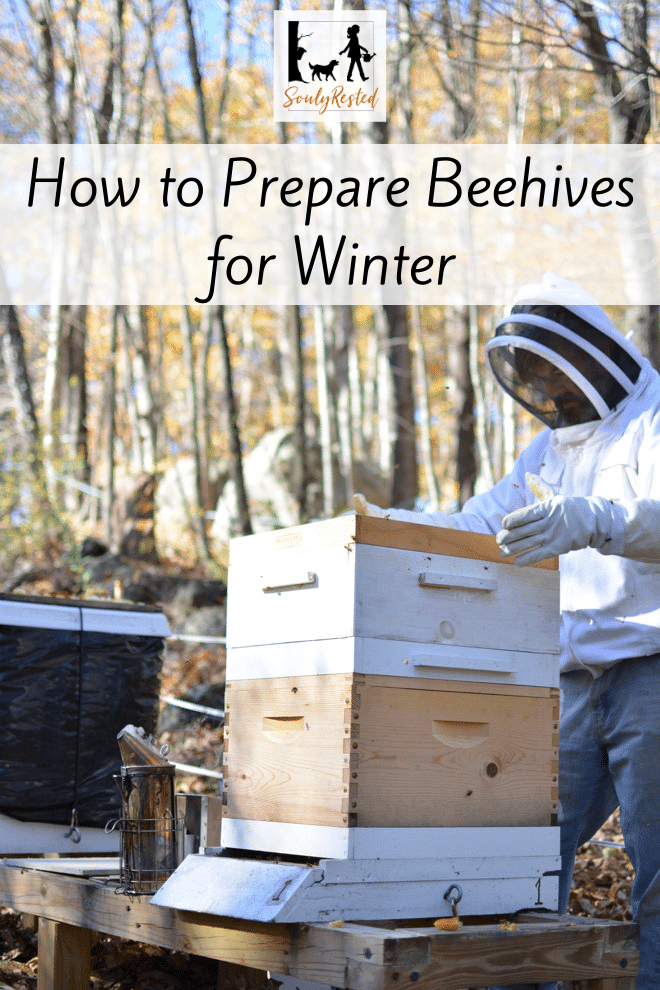Last Updated on June 20, 2024 by Michelle
Yes a Maple Queen can Love Honey too
Yes, folks know me as the “Maple Queen,” but first of all that was never a self-imposed title. (Y’all know I would only call myself the Queen of Mishaps. 😉 ) And second of all, a girl can have a second love when it comes to all-natural sugar, right?
It is true, maple syrup and maple sugar (not to mention maple cream… mmmmm) will always be my first sugar love, but honey falls in line in a close second place.
Moving an apiary
We brought home our little apiary two summers ago. A friend was retiring from his beekeeping hobby and knowing that I’ve wanted to be a beekeeper since before I wanted to tap trees, well, Terry asked if we’d like to adopt his colonies.
The trip from his house to our homestead was a short little drive in Bill’s pickup bed, but quite an adventure. We moved the hives in the early morning, before the bees had started their busyness of the day, and as soon as we placed them in their new home behind our barn they woke up and started scoping out the lay of the land for flowers to pollinate.
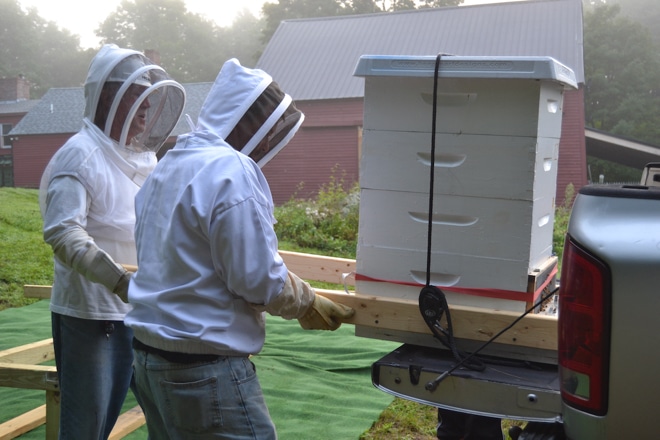
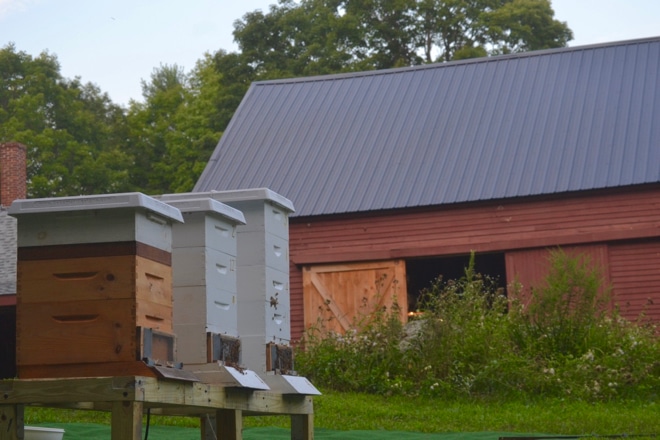
Challenges of beekeeping in a cold climate
But last winter we lost all three hives.
While it’s not at all uncommon in our harsh New England winter to loose the bees, no matter what thorough precautions you take, we were determined to try even harder this year to keep these sweet ladies alive. This summer we relocated our new hives to a more ideal location that gets even more sunlight hours throughout the long cold winter days here on our homestead.
And today I’m sharing some tips with you to prepare hives for the long winter months.
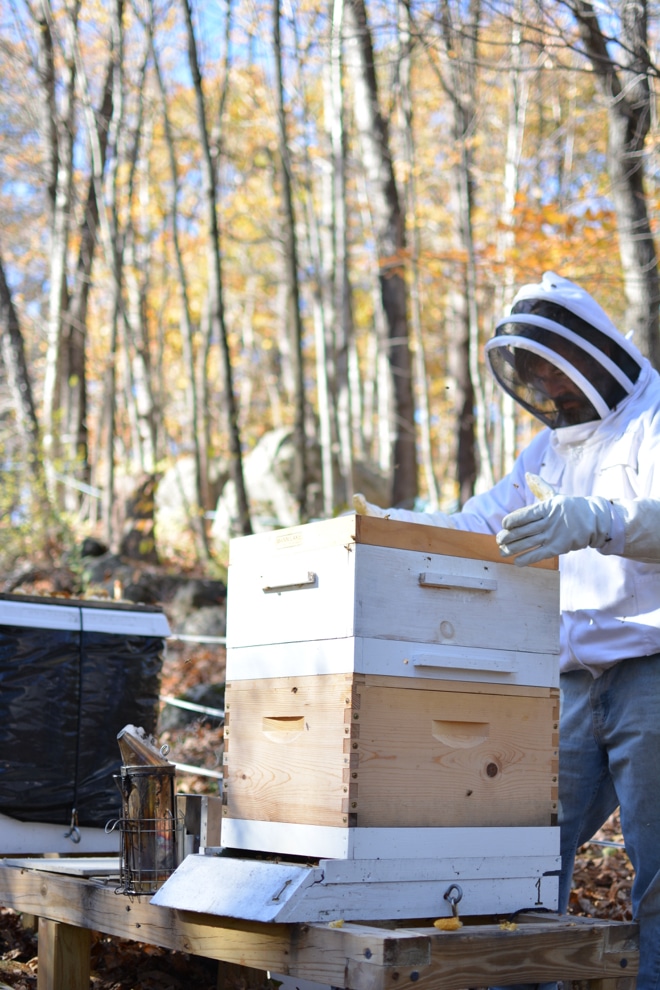
How to Prepare Beehives for Winter
If you follow some basic precautions and prepare your hives for winter weather you will increase their survival chances, even in a harsh environment like a long, brutal New England winter.
Here are some things to keep in mind every fall, before installing your winter insulation over your hives:
- Remove empty supers. No need to give the bees any more room than they absolutely need since a too large interior is drafty and more likely to become a den for a hungry rodent intruder.
- Inspect your lids to make sure they will keep out the freezing rain and snow and repair or replace them if needed.
- Look closely at the size of your colonies and consider combining them if they’re on the small side. You’ll be much happier in spring to have one thriving colony instead of two that didn’t make it.
- Check for a laying queen before closing your apiary for the winter. If you don’t see at least some brood in your hive, order a queen and introduce her to your apiary before as soon as possible.
- Notice if the honey stores look vibrant and full. If your hives are too light, be sure to offer your bees a lot of food before closing them in for the winter.
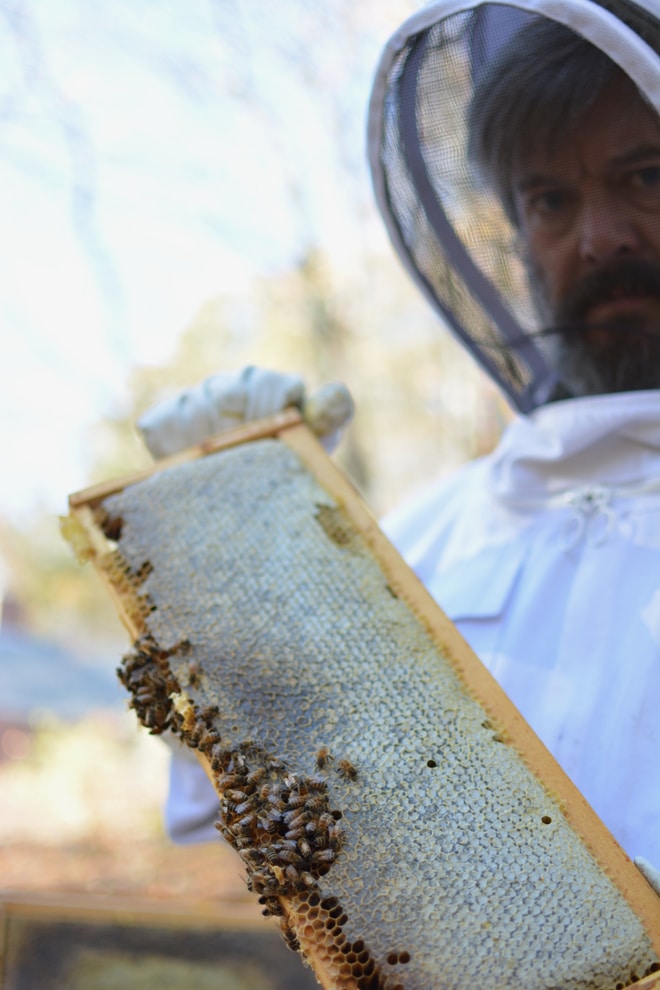
- Avoid welcoming small creatures into a snug home for the winter (where they have exorbitant amounts of sweet food) by closing off any extra entrances where they may sneak in.
- Make sure you’re not providing a home for those same rodents at the base of your hives… pull out or weed wack any tall weeds around your apiary so mice have no place to get comfy anywhere nearby.
- Insert a slatted rack in your hive so the bees have a little less draft during the cold windy months.
- Make sure your hives have proper ventilation, with air coming in through the bottom and out through the top. Even though this might seem counterintuitive, since you’re insulating the hives to keep them warm, trust me, they need the ventilation. They will all swarm together inside to keep each other warm even though there is a slight draft all winter long.
- Pile heavy stones, bricks, or other secure weights to make sure your lids are on for good, despite strong winter winds.
- Access your hives’ location and decide if you need to install any wind breaks. You don’t want to discover a topsy turvy set of hives on a snowy February evening.
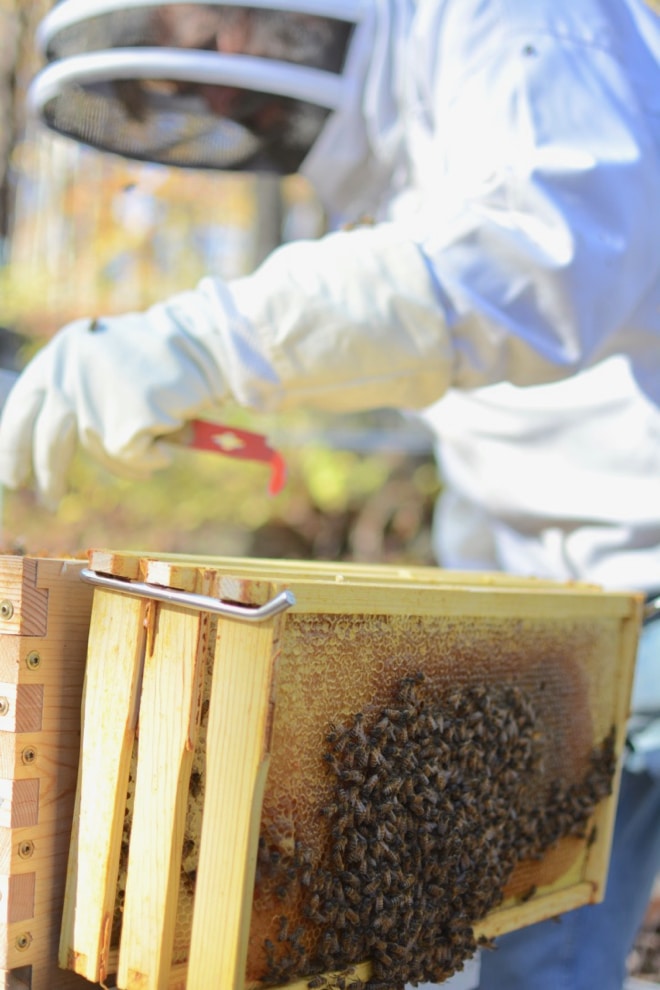
A few more tips for beekeepers in the fall
- Consider the worst that winter has to offer when planning the placement of your apiary. Notice where your bees will get as much winter sun as possible for the longest part of the day. They will have a much better chance of keeping the temperature bearable inside if you do them this important favor.
- Also consider the worst that old man Wind has to offer on your property. When possible, use natural barriers such as a tree line or for us a New England rock wall as well as a hearty clump of trees, when placing your hives.
- Never underestimate the need for ventilation. (Yes, I’m repeating this point, since like I said, it seems so counterintuitive to me.) Remember I mentioned how bees gather together in a cluster inside the hive all winter to keep warm together? Doing this actually creates moisture. So if air is not circulating through, the condensation will eventually kill your bees.
- Not unlike sugarmaking, beekeeping requires a little bit of meteorology on your part. There’s no magic date to start tapping maple trees in the spring, and there’s no magic date to closing your bee hives in the fall. You have to be aware of what’s going on with your local weather every year. When you realize that the weather is getting cold–and staying that way–then it’s time to start winterizing your apiary.
- Make friends with some expert beekeepers in your area. The most seasoned ones will be wonderful mentors in helping you to decide when it’s time to get your hives ready for winter.
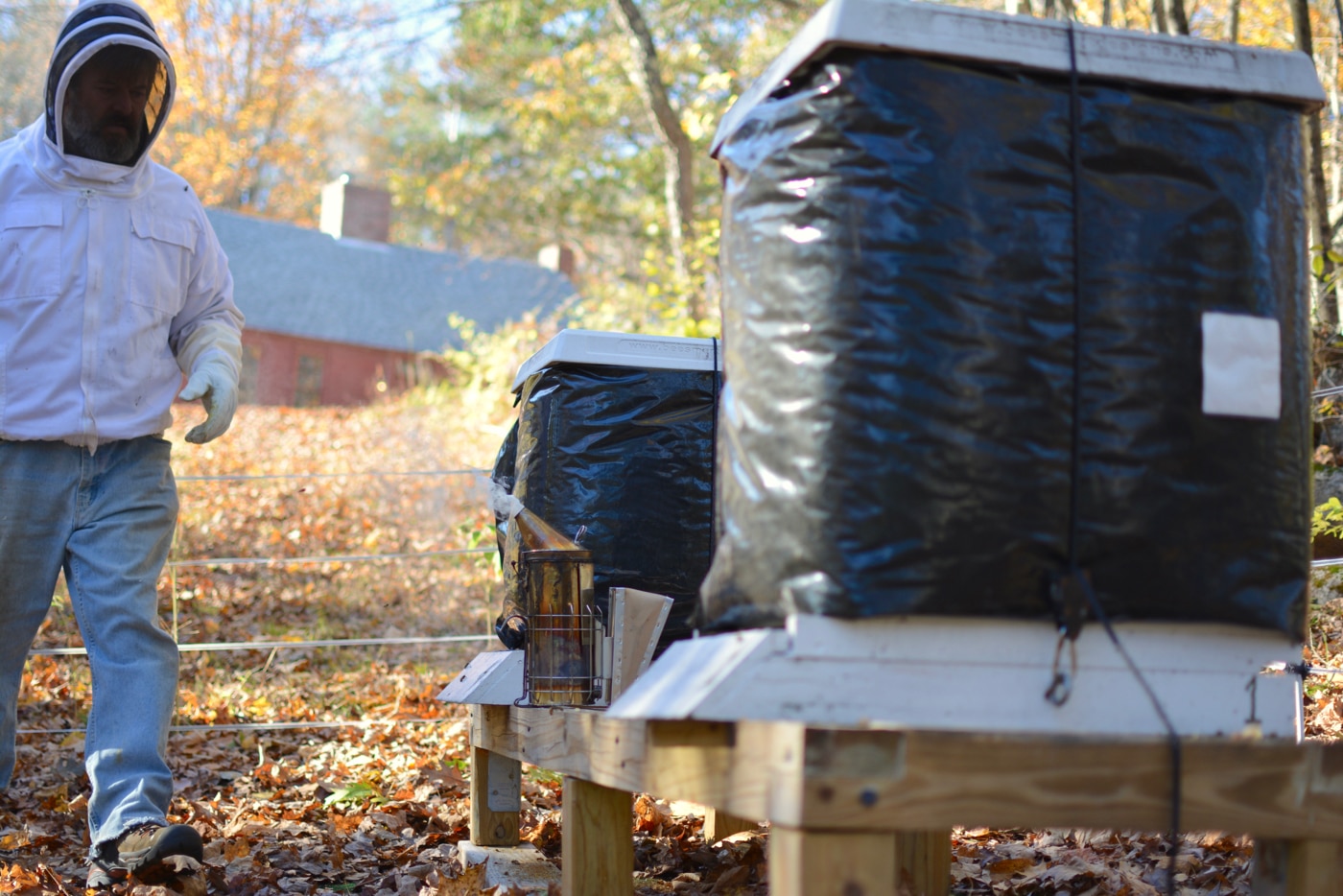
More about beekeeping and sugarmaking.
This post links to some great beekeeping resources.
This article explains how to add bees to your colony
This conversion chart makes it super easy to bake with maple syrup.
Proverbs 24:13
Pin this for later!
Click on the image below to pin this post.
Find out why SoulyRested was considered to be one of the Top 20 Must-Read Homesteading Blogs of 2018 and then one of the Top Homesteading Blogs of 2019 as well.
Glance at my Resource Page if you’d like to get a glimpse of supplies I use for maple syrup making, DIY kombucha, gardening, homeschooling, and homesteading.
Many readers often ask what camera I use to take the images you find here on SoulyRested. I love my Nikon.
I’d love to connect!
To find me in some other neck of the woods, just click any (or every!) icon below:
And please follow along!
Please take a second to follow along here on SoulyRested to catch up on a few of my memorable mishaps, discover fascinating things about my centuries-old farmhouse, glean a little parenting/homeschooling insight from this momma who’s been failing at the effort for almost 2 decades, or enjoy the inside scoop on the secrets other legit homesteaders might not tell you.
And have you tried my a-MAAHZ-ing Maple Sugar Cookie recipe that’s in my Resource Library? It’s one little peek into Sweet Maple waiting for you over there.
